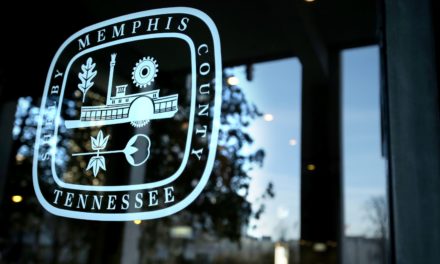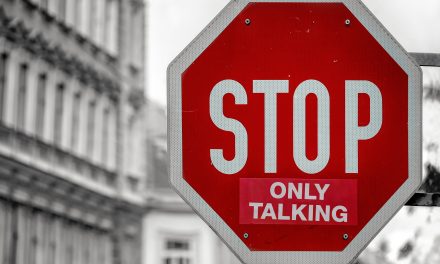By Ray Brown
The Memphis and Shelby County Uniform Development Code represents a critical step forward toward securing future economic competitiveness and success of our community. In concert with Sustainable Shelby, the collection of policies spearheaded by then County and now City Mayor AC Wharton and adopted both by the County Commission and the City Council, the UDC represents the community’s vision of the city we want to be.
If Sustainable Shelby is the what, the UDC is the how.
Incorporating concepts and principles drawn from proven urban design and form-based planning principles, the UDC offers an urban alternative to an auto-oriented, suburban development pattern. Implementing its requirements will gradually transform Memphis into a more attractive, vibrant, diverse, green, and walkable city, helping to ensure its overall long-term economic prosperity, and that of its residents, businesses, and property owners.
What the UDC Does
The UDC guides decisions and actions by government and private interests. Whether their projects include a proposed retail or residential development, a business park, or a hotel, private developers can now help contribute to a better looking, more functional, and more economically sustainable city and county. Likewise, elected and appointed officials have a stronger basis for making thoughtful, consistent, more predictable decisions. Both sectors can measure whether what they are about to do will advance us toward our agreed-upon vision of a prosperous future.
The UDC helps move us from where we are to where we want to be.
It considers how all parts of a vibrant and prosperous city should look, feel, and work, from neighborhoods to industrial areas, retail districts of all kinds and sizes, and major streets such as Union, Summer, and Poplar. It allows for the diversity of both historic inner ring neighborhoods such as Cooper-Young and Orange Mound, and newer mid-20th century neighborhoods in east Memphis. Its requirements adjust to fit the unique characteristics of each area while maintaining the basic design and planning principles proven to promote a consistently attractive and hospitable public realm.
Practical Benefits
Prosperity results from people buying stuff. (The American economy is 70% driven by consumer spending.) Cities and towns benefit from an increasing tax base. Sales taxes increase when incomes rise: more people can afford to pay higher prices to obtain more stuff. Bringing in more residents helps get us there. So does encouraging more density in fewer places. Instead of building more sprawl, we can reinvest in our existing neighborhoods. When more people cluster near agreeable, welcoming collections of shops and restaurants to which they can comfortably and conveniently walk, they spend more time, and more money, in those places.
The UDC helps change our thinking. The old zoning code it replaced favored the kind of sprawl that causes the imbalance between tangible real estate value and the cost of extending roads, sewer and water lines, fire and police services, and schools to serve low density, large lot suburban developments and widely spaced, drastically overbuilt commercial buildings.
We have already built more than double the amount of retail space than we can possibly fill. Retailers leaping farther out leave behind empty, undervalued, buildings that increase blight and drive more people away. Unless we retain and attract more talent, more of the middle class people who really pay the taxes that pay for things, we cannot sustain ourselves.
That’s not disaster thinking, it’s math.
Talented people are attracted to communities that offer the amenities and atmosphere the UDC is designed to help create. Only an established city can provide the authentic urban experience talented people seek; one where life centers on the public realm, grandparents sit on their front porches, families take evening strolls or bike rides, and where young singles casually meet each other in sidewalk cafes, inhabit flats or lofts above storefronts, and have commute times to knowledge-based jobs where miles or minutes measure in single digits.
That is the vision supported and fostered by the UDC.
The people of Memphis and Shelby County must begin to view every decision, public or private, as an investment, to be evaluated for its likelihood to generate a positive, tangible, financial return as increased real estate value that can put real money in everyone’s pocket. This strategy fundamentally changes the way we currently think and behave. It embraces and promotes the diversity and choices of lifestyles Memphis can offer newcomers.
The Way Forward
The UDC moves Memphis from the traditional model of single, segregated land uses to a more diverse, vibrant, mixed-use, form-based environment that has greater capability to attract and retain middle class residents, and more importantly, their discretionary income. Creating the UDC took years, and input from the entire community.
While some argue that the UDC stifles development, in fact, it is designed to provide a framework for the kind of development that will result in the city that gives us the most competitive position and the greatest chance of long-term success. Most developers are profit-driven. They work within whatever rules exist, if those rules are predictable and consistent, and result in a “squeeze” worth the “juice”. Rather than inhibiting development, the UDC points toward a way to make the city more attractive to consumers, and thus to developers.
Unfortunately, some of the amendments proposed for the UDC would dilute it in ways counterproductive to achieving the vision. Some eliminate or reduce the threshold for informing the community of proposed development changes that would affect their neighborhoods. Others concentrate and consolidate approval authority in the hands of the planning staff, where decisions can be made without community knowledge or input. Still others allow potentially undesirable uses in neighborhood commercial districts.
The Task Ahead
The Memphis City Councilors and Shelby County Commissioners should carefully study the proposed amendments, considering the potential impact of each. That’s a difficult and painstaking task, but one of critical importance to our community’s future.
The UDC was never intended to stand without change or amendment, but rather to be a living document that evolves over time. However, any changes or amendments must adhere to the policies adopted in Sustainable Shelby, and to the proven principles for positive change that underlie them.
The community’s overall long-term economic health depends on it.
Lowering the bar for development quality moves Memphis in the wrong direction. To water down the UDC in pursuit of short term gains for a few special interests is to commit slow civic suicide.





This blog is correct. The proposed amendments to the UDC being considered by City Council and County Commission in June 2012 will weaken an ordinance that has not even been put to a real test because of the lingering effects of the recession and housing bust. We should give it a chance to work before watering down a nationally acclaimed law.
One slight correction: the UDC is “Unified” Development Code, not “Uniform”. It unifies the zoning ordinance and subdivision regulations for Memphis and Shelby County, which have shared the same land use ordinances for many years.
Thank you Ray. You did a wonderful job of describing why we enacted the UDC in the first place and why it matters to every single resident of Memphis and Shelby County.
And Finegold, you too are correct. Let’s give the Code a chance to actually be put into wide scale use before we go about tearing it apart.